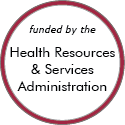Rural Project Examples: Social determinants of health
Effective Examples
Community Health Worker-based Chronic Care Management Program
Updated/reviewed August 2024
- Need: Improve healthcare access and decrease chronic disease disparities in rural Appalachia.
- Intervention: A unique community health worker-based chronic care management program, created with philanthropy support.
- Results: After a decade of use in attending to population health needs, health outcomes, healthcare costs, in 2024, the medical condition-agnostic model has a 4-year track record of financial sustainability with recent scaling to include 31 rural counties in a 3-state area of Appalachia and recent implementation in urban areas.
Other Project Examples
Rural Aging Action Network
Updated/reviewed January 2025
- Need: To connect isolated older adults and family caregivers in rural Minnesota, Montana, North Dakota, and South Dakota to services and supports so they can age in place.
- Intervention: The Rural Aging Action Network is a national collaborative of organizations that mobilize whole communities to address gaps in care for older adults and family caregivers.
- Results: Since 2022, the collaborative has reached over 600 older adults and over 100 family caregivers living in rural communities.
Healthy Adams County
Updated/reviewed November 2024
- Need: To create initiatives in rural Pennsylvania communities to address locally-identified health disparities.
- Intervention: Healthy Adams County was created by Adams County residents to promote community-wide health.
- Results: Community task forces have been formed to address breast cancer prevention, food policies, behavioral health, health literacy, oral health, tobacco prevention, and other community-identified needs.
Lakewood Food Access Initiatives
Updated/reviewed August 2024
- Need: Lakewood, Minnesota is classified as a food desert, where many rural families face food insecurity and low availability of both nutritious and affordable provisions.
- Intervention: A collection of programs address food insecurity and the dietary health of members of the community, from children and families to older adults, supplying them with locally-sourced fruits, vegetables, and meat.
- Results: Lakewood conducts around 50,000 food insecurity screenings each year. Fresh produce, meat, and other goods are distributed to roughly 140 families (around 500 individuals), 75 seniors, and 75 school-aged children annually.
Rural Libraries and Health Cooperative Agreement
Updated/reviewed July 2024
- Need: To increase access to healthcare and social services in rural South Carolina via library systems.
- Intervention: Pilot sites are hiring social workers and community health workers to provide consultations, case management, and referrals.
- Results: One library screens an average of 215 residents a month, and another library's programming reached over 800 female patrons.
The Rural Outreach Center
Updated/reviewed July 2024
- Need: To expand services for individuals and families living in poverty in rural Western New York.
- Intervention: The Rural Outreach Center (ROC) offers care coordination, therapy, budgeting assistance, and multiple other services and opportunities to help address immediate needs as well as empower individuals to work toward long-term freedom from generational poverty.
- Results: The Rural Outreach Center serves approximately 250 adults and children each year through counseling, care coordination, and empowerment opportunities. The ROC reports that many participants have achieved and sustained goals related to housing, savings, employment, and other social determinants of health – which are also measures of poverty.
Georgia Health Initiative's CDFI Investments
Updated/reviewed October 2023
- Need: Across Georgia, especially in rural areas, poor health outcomes and high poverty rates require strategic investments to reduce disparities and improve health across the state.
- Intervention: Georgia Health Initiative invests in Community Development Financial Institutions (CDFIs) working in Georgia to build a strong ecosystem of mission-driven community lenders focused on rural and low-income communities. The capital and capacity building provided by CDFIs support systems change to improve health across the state.
- Results: Since 2017, grants and Program Related Investments (PRIs) in CDFIs working in low-income rural communities have generated impact through stronger and growing Community Health Centers, expanded affordable housing, green energy loans and jobs, and growing small businesses.
Healthy Monadnock Alliance
Updated/reviewed September 2023
- Need: Improved health outcomes for Monadnock Region, a rural area of New Hampshire.
- Intervention: A wide-scale effort across multiple sectors is aiming to improve health outcomes throughout the region.
- Results: Community health trends have been tracked over time, and progress on goals such as increasing the number of residents with healthcare coverage, opportunities for physical activity, access to healthy foods, and smoking cessation has been made.
Outer Cape Health Services Community Resource Navigator Program

Updated/reviewed March 2023
- Need: Improving outcomes for Outer and Lower Cape Cod residents in need of social, behavioral health, and substance use disorder services while reducing the burden and costs to town agencies and hospital emergency rooms.
- Intervention: The Community Resource Navigator Program works with local social services, town agencies, faith-based institutions, hospitals, the criminal justice system, and others to identify and connect clients to needed services.
- Results: Clients are gaining access to the care they were once lacking, as measured by improvements in self-sufficiency. The program also helps community partners and stakeholders work together to reduce the impact of risks associated with behavioral health symptoms, substance use disorder, and social determinants of health.
For examples from other sources, see:
